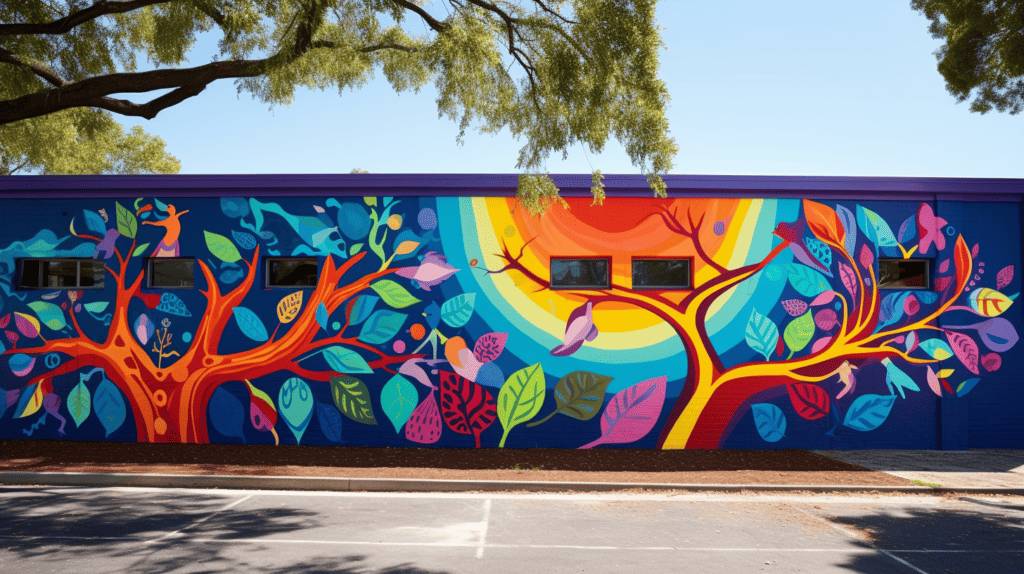The Importance And Benefits Of Giving Back To Your Community, it’s also an opportunity to make a positive impact on the world. Spending time and resources on local initiatives can create a ripple effect of social change and contribute to the development of your community. The act of giving back can also enhance your personal growth and well-being, creating a sense of purpose and fostering empathy. In this article, we’ll explore the various benefits of community involvement and provide practical tips on how to get involved and make a difference.
Key Takeaways:
- Community involvement can lead to positive social change and create a sense of responsibility among individuals.
- Giving back to the community can enhance personal growth, build character, and foster empathy and gratitude.
- Engaging in community service can lead to improvements in infrastructure, social cohesion, and overall well-being.
- Creating a culture of philanthropy within communities can inspire others to get involved and create a ripple effect of positive change.
Why Community Involvement Matters
The importance and benefits of giving back to your community can have a positive impact on both you and the society as a whole. By taking an active role in community activities, you can contribute to positive social change and create a sense of responsibility among individuals.
Community involvement is crucial for ensuring that everyone’s needs are met in a society. It can help to increase social cohesion and break down barriers between different groups of people. By working together and engaging in community projects, individuals can build stronger and more equitable communities.
Social responsibility is another key reason why community involvement matters. When individuals take an active role in their communities, they are helping to create a better world for everyone. By giving back to society, they are showing that they care about the welfare of others and are committed to making a positive difference.

In short, community involvement matters because it leads to positive social change, builds strong and equitable communities, and fosters social responsibility. By taking an active role in community activities, individuals can make a real difference in the world and inspire others to do the same.
Personal Growth through Giving Back
It is not just the community that benefits from an individual’s service, but the individual themselves also experiences personal growth and development. Volunteering and engaging in community service can be an enriching experience that enhances skills, builds character, and fosters empathy and gratitude.
Through volunteering, individuals can learn new skills that can be applied in their personal and professional lives. For example, volunteering at a homeless shelter may require organizational and communication skills that one can transfer to their workplace. Additionally, community service can help individuals build character by developing a sense of responsibility and accountability.
Volunteering can also lead to an increased sense of empathy and gratitude. When serving others, individuals gain a better understanding of the challenges faced by others, which can lead to increased empathy and a greater appreciation for their own blessings. Furthermore, experiences with others while volunteering can help individuals form meaningful connections, leading to an increased sense of belonging and overall well-being.

“The best way to find yourself is to lose yourself in the service of others.” – Mahatma Gandhi
Therefore, giving back to the community is not just about benefiting others, but also about personal growth and development. By volunteering, individuals can learn new skills, build character, foster empathy and gratitude, and form meaningful connections that ultimately contribute to a sense of fulfillment and well-being.
Building Stronger Communities
One of the most significant effects of giving back to the community is the impact it has on community development. When individuals get involved and actively participate in community activities, they contribute to its growth and welfare. Community engagement can lead to improvements in several areas, including infrastructure, social cohesion, and overall well-being.
Volunteering for community projects, participating in events and activities, and supporting local businesses are all effective ways to build stronger communities. These actions create a sense of unity and togetherness among community members and promote a culture of collaboration and support.
Community Engagement and Infrastructure
Community engagement is an effective way to improve infrastructure and the quality of life in a particular area. When community members work together to address common issues, they can bring about significant change. For instance, residents might come together to address a road that has been in disrepair for years, leading to accidents and traffic congestion. By working collaboratively with local government bodies, individuals can create a plan to repair the road and prevent future accidents.
Similarly, community engagement can lead to improved parks, playgrounds, and other public facilities. When people join hands to clean up and maintain such spaces, they contribute to the overall well-being of the community. Such places become safer and more appealing to residents and visitors, which, in turn, can benefit local businesses.
Social Cohesion and Community Well-being
When people are actively engaged in their communities, it fosters a sense of social cohesion. Interacting with people from diverse backgrounds and working together towards a common goal helps build trust and respect among community members. This sense of togetherness contributes to the overall well-being of the community.
A strong sense of community can be particularly beneficial during challenging times. When disaster strikes, community members can come together to provide aid and support to those in need. Such instances often demonstrate the true power of community engagement and its ability to bring people together during times of adversity.

Ultimately, building a stronger community involves active participation and engagement from its members. It requires individuals to step forward and take responsibility for their community’s well-being. By contributing to community development, individuals can make a difference and inspire others to do the same.
The Benefits of Community Service
Engaging in community service is a powerful way to make a positive impact on society while also benefiting oneself. By giving back to the community, individuals can create significant benefits for themselves and their neighbors. Here are some of the specific advantages of community involvement:
- Creating a sense of purpose: Volunteering can provide individuals with a sense of purpose and direction, helping them to feel more fulfilled and engaged with their lives.
- Building meaningful connections: Community service allows individuals to connect with others in their community, fostering relationships and a sense of camaraderie that can lead to long-lasting friendships and support networks.
- Improving mental and physical well-being: Studies have shown that volunteering can lead to reduced stress levels, improved mood, and even lower rates of chronic disease.
In addition to these personal benefits, community service can also have a significant impact on the community as a whole. By getting involved in community development efforts, individuals can:
- Address community needs: Community service can help identify and address the specific needs of a community, ensuring that resources are distributed fairly and effectively.
- Empower community members: Engaging in community service can empower individuals to take ownership of their community and take an active role in shaping its future.
- Promote social cohesion: By bringing community members together, community service can promote social cohesion and create a more unified and supportive community.
Overall, the benefits of community service are numerous and far-reaching. Whether through volunteering, philanthropy, or other forms of community involvement, individuals can make a significant impact on their communities while also experiencing personal growth and development.

Creating a Culture of Philanthropy
Creating a culture of philanthropy within communities is essential to promoting social responsibility and inspiring others to get involved. Giving back is contagious, and when individuals see the positive impact it can have, they are more likely to follow suit. In fact, research has shown that people who observe others engaging in prosocial behavior are more likely to do the same themselves.
Businesses and organizations also play a crucial role in promoting philanthropy and social responsibility within their communities. They can do so by sponsoring community service events, offering paid time off for volunteering, or donating funds to local charities. By doing so, they not only contribute to the betterment of their communities but also enhance their public image and reputation.
“Philanthropy is not about money, it’s about feeling the pain of others and caring enough about their needs to help.” – Timothy Pina

In addition to promoting philanthropy, community involvement can also have a positive impact on businesses and organizations. Partnering with local groups, such as schools or non-profits, can provide opportunities for employee engagement and skill development, and can help build stronger relationships with customers and stakeholders.
Ultimately, creating a culture of philanthropy within communities is about inspiring and empowering individuals to make a difference. Whether through volunteering, donating, or advocating for social change, everyone has the power to contribute to the betterment of their communities and make a positive impact.
The Importance And Benefits Of Giving Back To Your Community
Overcoming Barriers to Community Involvement
While the benefits of giving back to the community are numerous, some individuals may face barriers to getting involved. Time constraints, lack of resources, and uncertainty about how to make a meaningful impact are common obstacles.
However, with a little creativity and persistence, these barriers can be overcome. Here are some tips for those looking to get involved:
| Barrier | Solution |
|---|---|
| Limited time | Consider volunteering for short-term events or finding flexible volunteer opportunities that fit your schedule. |
| Lack of resources | Look for organizations that provide training, resources, and support to volunteers. Consider donating items or services instead of money if finances are a concern. |
| Uncertainty about impact | Research organizations and causes that align with your values and meet the needs of your community. Start small and focus on making a tangible difference in your immediate surroundings. |
By taking small steps and overcoming these barriers, individuals can make a significant impact on their communities and experience the personal growth and fulfillment that comes with giving back.

In the end, we will remember not the words of our enemies, but the silence of our friends. – Martin Luther King Jr.
It is important to remember that even small acts of kindness and community involvement can make a difference. By overcoming barriers and getting involved, individuals can create a ripple effect of positive change that extends far beyond their immediate surroundings.
Sustaining Community Engagement
Giving back to the community is not a one-time event but an ongoing journey towards positive change and development. Sustaining community engagement requires commitment, patience, and persistence, but the rewards are invaluable.
To begin with, it is important to identify the causes and issues that matter most to the individual, and the community at large. This information can guide the selection of initiatives, activities, and organizations that align with the individual’s values, interests, and strengths.
One way to sustain community engagement is by establishing long-term relationships with community members, leaders, and stakeholders. These connections can help build trust, foster collaboration, and create a sense of shared purpose and responsibility.
Another way to sustain community engagement is by being reliable and consistent in one’s efforts. This means showing up on time, following through on commitments, and being accountable for one’s actions. It also means being open to feedback, learning from mistakes, and adapting to changing circumstances.
Finally, sustaining community engagement involves celebrating successes and acknowledging challenges. It is important to recognize and share the impact of one’s contributions, as well as to reflect on areas that may require improvement or adjustment. By doing so, individuals can stay motivated, connected, and committed to their community service goals.

Sustaining community engagement requires dedication and effort, but it is a deeply rewarding and fulfilling experience. By building strong relationships, being reliable and consistent, and celebrating successes, individuals can make a lasting positive impact on their communities, and inspire others to do the same.
Measuring the Impact of Giving Back
Giving back to the community is a noble act, and it’s crucial to measure the impact of the effort. It helps people understand what works and what doesn’t, enabling them to make more informed decisions regarding their community service. Several methods measure community impact, and experts recommend evaluating the outcome of the various community service efforts regularly.
The first way to measure community impact is to conduct a survey. A survey provides valuable insight into the community’s needs and opinions, giving volunteers a basis for their decisions. Volunteers can conduct the survey online or in person, depending on the size of the community and the available resources.
Another way to measure community impact is to keep track of the number of people engaged in community service efforts. Volunteers can monitor and register the number of people showing up for events, whether they are donating time, materials, or other resources. A steady increase in the number of participants signifies the growing interest and willingness of the community to contribute towards a common goal.
Thirdly, volunteers can measure community impact by evaluating the outcome of their community service efforts. They can assess a particular situation before, during, and after the service and compare the outcomes. Evaluating the results can help volunteers identify areas that need improvement and adjust future actions accordingly.
Finally, volunteers can measure community impact by seeking feedback from the community. Volunteers can ask for feedback through social media, email, or other available platforms. Feedback provides an understanding of the community’s perception of the service, allowing volunteers to adjust their effort to meet the needs of the community better.

“The noblest pleasure is the joy of understanding.” – Leonardo da Vinci
Measuring community impact is an essential part of community service. It helps volunteers understand what works and what doesn’t, enabling them to make more informed decisions. While measuring community impact can be challenging, it is crucial for maintaining the effectiveness of community service efforts.
Inspiring Future Generations
Encouraging children to get involved in community service can have a lasting impact on their personal growth and development, as well as the well-being of their communities. By instilling a sense of social responsibility at a young age, future generations can continue to build stronger, more resilient communities.
One way to involve children in community service is to seek out family-friendly volunteer opportunities. Many organizations offer events or projects that are designed for families to participate in together, such as park cleanups, food drives, or animal shelters.
Another approach is to model giving back as a regular part of family life. By incorporating community service into their daily or weekly routines, parents can demonstrate the value of social responsibility and inspire their children to follow suit.
Additionally, schools and youth organizations can play a crucial role in nurturing a culture of philanthropy. By incorporating community service projects or volunteer hours into their curricula, educators can help students develop a lifelong commitment to giving back.
“It is easier to build strong children than to repair broken men.” – Frederick Douglass
By investing in the future through inspiring and empowering young people to give back, communities can create a positive cycle of social impact and change.

The Importance And Benefits Of Giving Back To Your Community
Giving back to the community is not just a selfless act of kindness; it has numerous benefits for individuals and society as a whole. Community involvement can have a positive impact on the lives of people, and it helps to build strong, thriving communities. Through social responsibility, philanthropy, and community development, individuals can make a difference and inspire others to get involved in creating a positive change.
Why Community Involvement Matters
Active participation in community activities is vital for creating positive social change and instilling a sense of responsibility among individuals. By engaging in community service, people can make a significant impact in their communities and make it a better place to live for everyone. Community involvement fosters a sense of belonging, and it helps people to connect and forge meaningful relationships.
Personal Growth through Giving Back
Volunteering and engaging in community service offer numerous personal benefits. It is an opportunity to enhance skills, build character, and foster empathy and gratitude. By getting involved in community activities, individuals can become more confident, develop leadership skills, and grow as individuals.
Building Stronger Communities
Giving back to the community contributes to its development and strengthens bonds among its members. Through community engagement and active participation, people can lead to improvements in infrastructure, social cohesion, and overall well-being. Building stronger communities requires commitment and a collective effort from everyone
The Benefits of Community Service
Community service provides a sense of purpose, creates meaningful connections, and improves mental and physical well-being. It is a way to give back to society, and it offers a chance to make a positive impact on the world. There are many ways to give back to the community, and every contribution, no matter how small, can make a significant difference.
Creating a Culture of Philanthropy
Creating a culture of philanthropy is essential for inspiring others to get involved. Giving back can inspire people to make a positive change and create a ripple effect of positivity. Businesses and organizations have the responsibility to promote social responsibility and encourage people to get involved in community service initiatives.
Overcoming Barriers to Community Involvement
Common barriers such as time constraints, lack of resources, or feelings of uncertainty, can often prevent individuals from getting involved in their communities. However, there are practical tips and strategies that people can follow to overcome these obstacles. By identifying the barriers and finding creative solutions, individuals can make a positive impact on their communities.
Sustaining Community Engagement
Community engagement requires sustained effort and long-term involvement. Individuals must maintain their commitment to giving back and make a lasting impact on their communities. There are various ways to sustain community engagement, such as setting realistic goals, establishing partnerships, and staying informed about community needs and events.
Measuring the Impact of Giving Back
Measuring the impact of community service is crucial for ensuring the efforts are effective and address the actual needs of the community. It is essential to evaluate the community service initiatives regularly and assess their impact. By measuring the impact, individuals and organizations can understand the results of their efforts and identify areas for improvement.
Inspiring Future Generations
Instilling a sense of social responsibility in children and teenagers is vital for creating a brighter future for everyone. By involving young people in community service initiatives, they learn the importance of giving back and become engaged in creating positive change. It is an opportunity to inspire future generations to become leaders and advocates for change in their communities.
Conclusion
Giving back to the community is an essential component of social responsibility and personal growth. It provides numerous benefits for individuals and society as a whole, and it creates stronger, thriving communities. By overcoming barriers, staying committed, and inspiring future generations, individuals can make a positive difference and create a better world for everyone.
FAQ on The Importance And Benefits Of Giving Back To Your Community
Q: What are the benefits of giving back to your community?
A: Giving back to your community brings numerous benefits, including personal growth, a sense of purpose, and improved mental and physical well-being. It also strengthens the community as a whole, fosters social responsibility, and creates meaningful connections.
Q: Why is community involvement important?
A: Community involvement is important because it leads to positive social change, strengthens bonds among community members, and contributes to overall community development. It creates a sense of responsibility and encourages individuals to actively participate in shaping their community’s future.
Q: How does giving back contribute to personal growth?
A: Giving back through volunteering and community service enhances personal growth by developing skills, building character, fostering empathy and gratitude, and providing opportunities for self-reflection and self-improvement.
Q: How does giving back help build stronger communities?
A: Giving back to the community contributes to community development by improving infrastructure, promoting social cohesion, and enhancing overall well-being. Active community engagement and participation create a supportive environment where individuals come together to address common challenges and create positive change.
Q: What are the specific benefits of community service?
A: Engaging in community service provides a sense of purpose, allows individuals to make a meaningful impact, and helps develop a strong sense of connection to others. It also improves mental and physical well-being, creates opportunities for personal and professional growth, and enhances social awareness.
Q: How can we create a culture of philanthropy?
A: Creating a culture of philanthropy involves inspiring others to get involved, leading by example, and promoting social responsibility. Businesses and organizations play a vital role in fostering a culture of giving back by providing support, resources, and opportunities for community engagement.
Q: What are common barriers to community involvement and how can they be overcome?
A: Common barriers to community involvement include time constraints, lack of resources, and feelings of uncertainty. These can be overcome by prioritizing and allocating time effectively, seeking support from community organizations, and starting with small, manageable steps towards involvement.
Q: How can community engagement be sustained in the long term?
A: Sustaining community engagement requires ongoing commitment and active participation. This can be achieved by finding areas of personal interest, connecting with like-minded individuals, and taking on leadership roles within community organizations. It also involves regularly reassessing and aligning personal goals with community needs.
Q: How can the impact of giving back be measured?
A: Measuring the impact of giving back involves evaluating community service efforts to ensure they align with the actual needs of the community. This can be done through assessments, surveys, feedback from community members, and tracking specific outcomes or changes resulting from the efforts.
Q: How can we inspire future generations to give back?
A: Inspiring future generations to give back involves teaching children and teenagers about the importance of community service, providing opportunities for hands-on involvement, and emphasizing the long-term benefits of social responsibility. Leading by example and involving young individuals in community initiatives from an early age can instill a sense of purpose and create a lasting impact.





Leave a Reply